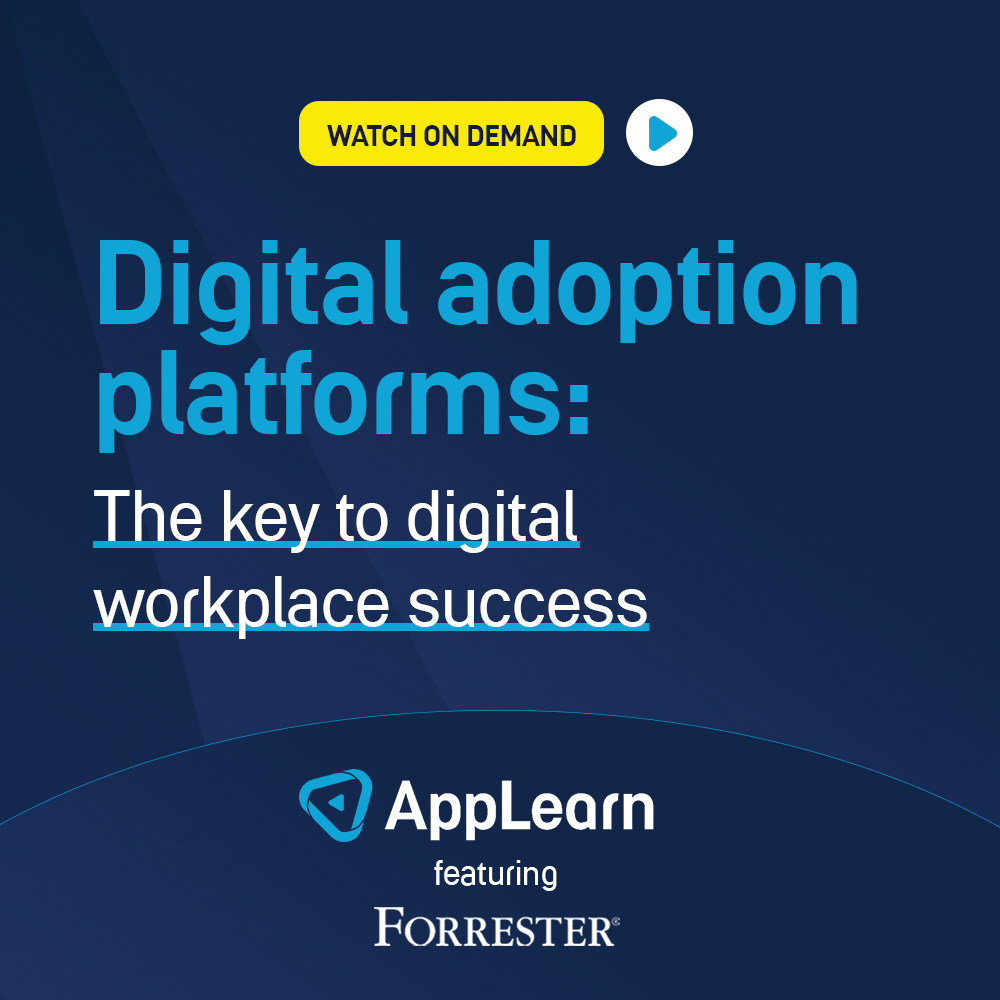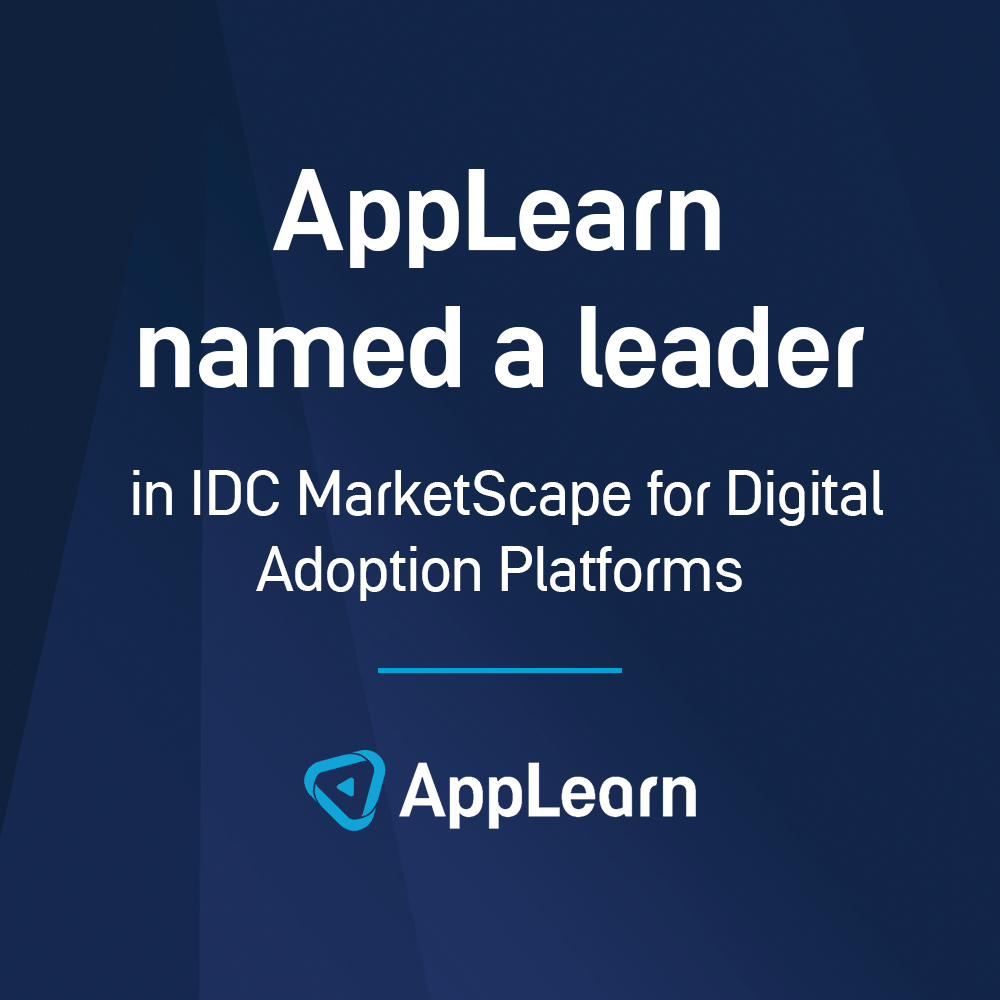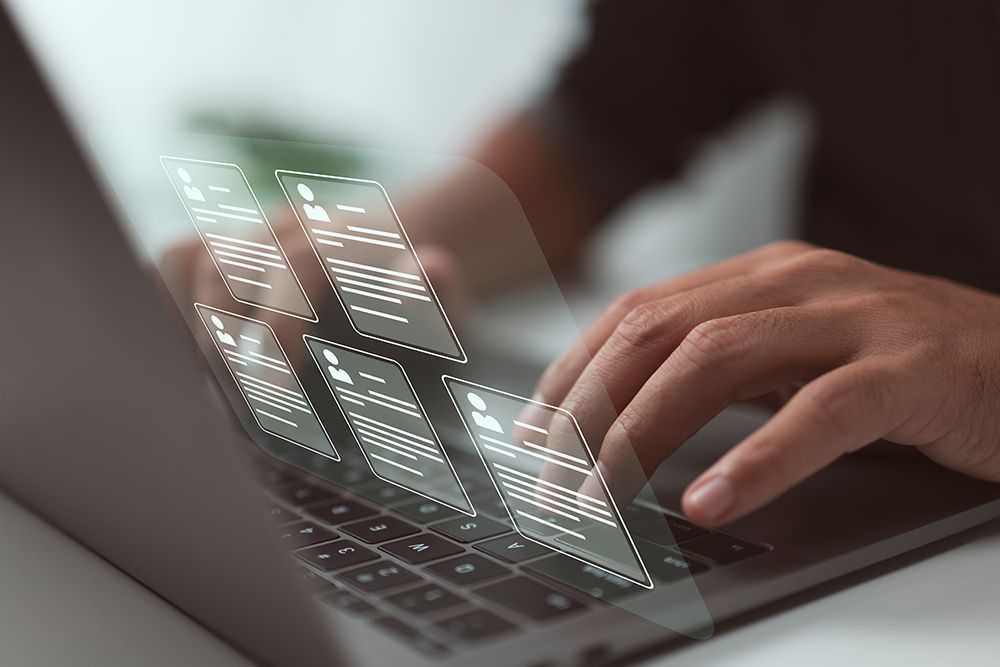News
The digital workplace in 2024: Impactful strategies for improving the employee experience
The digital workplace in 2024: Impactful strategies for improving the employee experience
Do you know your rubber duck moments from your intentional connections? Is your onboarding process and its impact on your bottom line frozen in the steely gaze of your board? How many sizes do or don’t fit when it comes to your approach to distributed teams and hybrid working environments? How and when do you measure employee experience and engagement?
These were the topics of a deep and far-reaching roundtable discussion hosted by AppLearn, bringing together experts from companies across the globe and a range of industries to debate the issues surrounding the digital workplace in 2024, and impactful strategies for improving employee experience.
In framing the session, AppLearn’s David Carling, Solutions Consultant, pressed the nine-strong panel - representing some of the largest businesses in the world - of the critical issues in their business, and those that impact the employee experience.
The last four years has seen shifts that have meant every workplace has become a digital workplace. While technology and cultural programmes can take the employee experience so far, we wanted to understand how AppLearn’s customers blended innovative tech with best practice comms.
It’s safe to say organizations will need innovative, fair, and inclusive leadership to navigate new and increasingly complex workplaces in the year ahead.
Managing distributed teams in a hybrid work model
It’s evident hybrid working is here to stay, but employers and employees must overcome a number of challenges for it to be effective.
Every day, organizations are challenged with creating hybrid working policies, environments, and touchpoints that are fair to everyone. In doing so, they have to consider if their company culture is being damaged or if the business might be less productive and therefore less competitive as a result.
Communication is a key enabler wherever your location is.
For Rob Schulz, Senior Director IT at Interfor, a key focus to drive success in a hybrid working world is about being intentional with the connections in your working environment and having greater accountability for your remote teams.
“I found that from a manager's standpoint, we have to be a lot more intentional about connecting with our remote employees,” he said.
“Things we take for granted - we're walking around the office, we're talking in cubicles, or lunch rooms and things like that - it’s there where there’s a natural connection.
“But when people are working remotely, you have to go out of your way to schedule those kinds of interactions. As artificial as that may feel. It's something that needs to happen.”
For one of our attendees - the Group People Technology Manager of a well-known global distributor of industrial and electrical products - who’s an advocate of helping protect the wellbeing and work-life balance, her team supports each other by having what they call “rubber duck moments”.
They’re those pockets of time for short interactions that don’t require a full and formal meeting. Something that can be hard to carve out in a virtual or hybrid environment.
“A rubber duck moment is one of those conversations where we just need to pick somebody's brains because I'm stuck,” she says. “Our team put it into the team’s chat - and if one of the team is free, they’ll join. We call them ‘rubber ducks’. It’s code for needing five minutes that can help unstick people.”
For another of our attendees - the head of service design and transition at a global law firm - there’s a utilization of Teams software in his organization, and working to shared rules around status notifications. Proponents of Teams from pre-pandemic times, it’s a policy that mirrors a respectful tap on the shoulder in the office.
“We've found that using the status on teams works very well - probably similarly to what we have in the office. If someone pops over and says, ‘can I just have a word?’, rather than arranging a meeting, you either say, ‘yes, I'm free, or you say, ‘can you come back in 15-20 minutes?’.
“In our organisation, I think over the years, people have just got used to respecting what people are putting onto that status. I'm sure we get people gaming the system a little bit by blocking out time in their calendar to make it read so that they don't get disturbed. But you could do that in the office if you went into a meeting booth, suggesting ‘I'm here to make sure that I’m not disturbed’. So I don't think it's any worse. I just think it's a way of making the hybrid experience as close as you can to the office, and all its imperfections as well.”
Ulrika Grip runs a fully virtual team at RS Group - covering 42 global locations - and the business has operated with its distributed workforce for some time. She recognizes the holistic needs of a diverse team, and the fun and non-work related interactions (such as Fika Wednesdays), are as important to the formal sessions.
“Because the whole team is very individual, everybody works differently. So some people need more face-to-face time, while some people want to go away and work on their own. I think as a manager, you need to get to know your team and see how it works with different individuals. So you can't just put one manager style all over the team, you need to put it up differently.”
The employee ‘want’ vs. the employer need
For the Director Digital HR at a well-known multinational home appliance manufacturer, the hybrid approach initially caught his business off guard, leading to a tension between the leadership wanting to bring people back to the office full time, with employees still wanting hybrid work.
And while a 60-40 on-site vs. Teams balance is in place, there’s also the weight of generational expectation.
He said:
“I think the manager role has changed quite a bit to be able to manage in a hybrid world. We have people who worked here for 20-30 years, because of how old we are as a company. They struggle in a hybrid world, where maybe a younger generation, or leaders who haven't been around as long, are used to it now.
“Being from a tech background, I found it quite normal. I was just a remote employee from a remote office. So for me, it was just natural when it happened. But if you've been working here for 25 or 30 years, and you've been going to the office every single day for that period, well, then it's different, right?
“So I think company culture is an important aspect of how you are expected to be as a manager in a hybrid world.”
The Group People Technology Manager, representing a global distributor of industrial and electrical products agrees. “Because of the age of your business, you do have those different personas of managers that have been around for many, many decades in some cases, in an obviously pre-pandemic, phase. And they very much build their relationships and great skills. There's been quite a step change for them.
“And then you've got a different group of folk who are perhaps at the start of their management career and are only used to the digital environment and post-pandemic.”
Preparing teams and embedding culture from the outset
While in many instances specific training hasn’t taken place, HR teams have ensured learning content is available for people, and given leaders a framework to work with.
The Group People Technology Manager continued: “We’ve got three key areas in our framework that allow us to think about how we trust. How do we act with passion, humility, and trust? And by using that framework, it helps us to evolve our team thinking, because you're working towards am I trusting my team to do this? Am I doing the things they need for me and that passion, and humility? So why is it about virtual working or not?
“We allowed the team to develop as well. How do they want to work. I think the key here is, we are all individuals.”
For the head of service design and transition at a global law the story was similar. “Partly we've moved to more of an outcomes-based society. So as long as a manager, you understand what is reasonable to expect from an outcomes perspective for your team.
“For me, it just comes down to good management and relationships between the manager and the team to make sure that both the business and the individual are getting what they need out of the relationship.”
There was consensus that a winning culture starts from day
one. And that starts with both onboarding and pre-onboarding.
Daniela Clarke-Williams is an HR Technology Advisor at Anglo American. As part of an HR Global transformation program that concluded earlier in 2023, one of the processes in scope for full end-to-end redesign was the onboarding process, introducing case management system ServiceNow.
“The programme was fundamentally underpinned by that particular technology enabler. It was moving from a multitude of manual forms and processes that you would have to complete on day one.
“Having that kind of technology enabler for new joiners to complete all that information once and electronically before they join, as well as giving them access to the correct systems in order for them to complete any mandatory compliance training safety training before they join, they can hit the ground running when they start.”
It’s an example where time, originally being spent by HR in the wrong place, wasn’t allowing the department to show its value.
By removing manual processes, such as chasing down new joiners, and by giving people the tools to be able to self-serve before they join, valuable time is released back into HR.
“We've also created a new service line in our shared service team who focus on onboarding and offboarding so that they can work directly in ServiceNow to track through the completion of those tasks and support the employee and line managers.”
And with a similar process at Interfor, with onboarding plans prepared for each employee so that they have a self-guided process that they can follow, complete, and be monitored in their first 60 days.
It means hiring managers, through a federated approach, can ensure all new starter requests are completed, and the onboarding experience is as seamless as possible.
Measuring the metrics that matter (and acting on them)
The old adage goes, if you can’t measure it, then you can’t manage it. However, pinning down a number and understanding impact can be difficult when it comes to some of the softer moments of the employee experience.
To understand if your digital employee experience works for your people, or could be actively working against them, you need to understand their operating environment. And that means mining and interpreting the right data.
To create a meaningful and actionable digital employee experience that works across your organisation, understanding is required. The challenge is thus to intelligently mine and deliver the necessary data to your business.
It’s where a DAP can add real value and was touched on by our roundtable. would be approached by compiling analytics that identifies common pain points, snags in the user journey and the time consuming tasks.
A DAP layers over software programs, learning how employees use and interact with them and tracking day-to-day engagement. That kind of insight provides the ability to develop digital tools such as step-by-step guides, pop-ups, or directing users to in-app resources when user difficulty is detected.
It exemplifies the value in DAP investment and its role as a critical tool to encourage digital adoption that can enhance a measurable employee experience.
And it’s something that works hand-in-glove with the measures discussed by our roundtable.
Michelle continued, “We are still measuring to try and understand employees. We’re doing exit surveys at the moment to build that picture about why are people leaving our organization. While we can guess, it’s data driven thought processes that we need. We have invested in our technology and our employee lifecycle surveys allow us to measure those moments that matter.
“In our organization it’s called ‘my voice’, and is all about the employee engagement feedback giving us that insight.”
It's an approach that allows the organization to measure how well it’s doing as well as its individual managers. They even receive their own report with actionable learning programmes based on insights, driving upskilling thanks to insights from the metrics.
Meanwhile, frequent pulse surveys for snapshots and sentiment, became commonplace for others during the pandemic, surprisingly easing off in regularity with the move to a more hybrid environment.
With more and more data available around usage of systems, platforms, especially employee voice and feedback, it’s an area that’s growing in importance – agreed collectively with the cohort.
Technology and people
Across a corporate landscape where innovation and agility are critical pathways to success, it is unsurprising that the digital employee experience has become recognized as a pivotal factor, especially in a distributed global workplace.
Digital experience is central to organizations, and that’s whether that experience is good or bad. The evidence is in the business outcomes and the employee retention (and feedback).
Great organizations with strong leadership know that employees are not just cogs and wheels in a machine – they are the machine. It is their experiences, perspectives, and sense of well-being that determine how efficiently the organisation operates.
Shaping positive employee experiences can be challenging, but with the approach to communication, the overlay of technology, there is demonstrable transformative potential.
In AppLearn’s own Hidden Cost of the Digital Employee Experience research, the in-application behavior of one million users found 58% of employees reporting the number of applications they use increasing since March 2020. And one in five expressed frustration with use. The rise in applications and digital processes means that, on average, employees switch between 35 disparately connected yet business-critical applications more than 1,000 times a day. Sometimes to complete just a single process.
Through this lens, it becomes understandable, why users lose confidence, administrative burdens increase, and adoption rates begin to decline.
It’s another reason behind the growing use of DAPs - protecting against these risks and stitching together technology stacks, bringing improvements and consistency to the digital employee experience (DEX).
From onboarding and becoming attuned to the internal processes of a business, through to more nuanced processes that are critical to smooth operations, DAPs have now have a starring role and are able to drive ROI, but also employee experience.
Whether you’re helping your people navigate the complex, ever-evolving labyrinth of digital tools, ensuring they have a voice in a hybrid world across distributed teams, and communicating with them in a manner that supports both individual and organization, digital experience is core.
Article by
Adam McVey
Share this article






